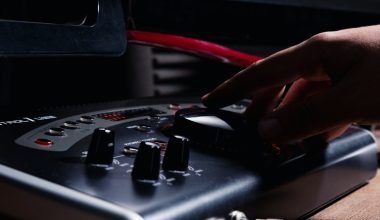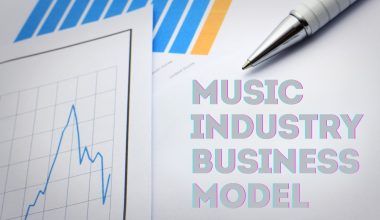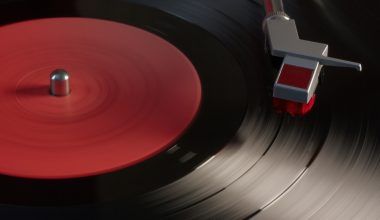In today’s digital age, content creation has become a cornerstone of online engagement. Whether you’re a budding YouTuber, a professional filmmaker, or a hobbyist creating videos for fun, the music you choose can significantly impact your content’s success. This is where the YouTube music library comes into play. This blog will dive deep into what the YouTube music library is, how to use it, and the benefits it offers to creators. Our focus keyword for this article is “YouTube music library,” and we will explore various aspects to ensure you have a comprehensive understanding of this invaluable resource.
Understanding the YouTube Music Library
The YouTube music library is a treasure trove for content creators. It is a collection of free music and sound effects that YouTube provides for creators to use in their videos without the fear of copyright infringement. This library is part of YouTube’s commitment to helping creators produce high-quality content without legal hassles.
What is Copyright-Free Music?
Before diving into the specifics of YouTube’s library, it’s essential to understand what copyright-free music is. Copyright-free music refers to tracks that are not protected by copyright laws or where the copyright holder has explicitly waived their rights. This means you can use the music without needing to obtain permission or pay royalties.
Copyright-free music can come from several sources:
- Public Domain: These are works whose copyright has expired, or the creator has released them into the public domain.
- Creative Commons Licenses: Some artists release their work under Creative Commons licenses, allowing others to use their music under specific conditions.
- Royalty-Free Music Libraries: These are collections of music tracks that you can use after purchasing a license or subscription, with no additional royalties required per use.
The YouTube music library falls under the third category, providing a vast selection of royalty-free tracks for creators.
Benefits of Using the YouTube Music Library
Using the YouTube music library offers numerous benefits, making it an attractive option for creators of all kinds.
- Avoiding Copyright Strikes: One of the most significant advantages is the peace of mind that comes with knowing your videos won’t be flagged for copyright infringement. This is crucial for maintaining your channel’s good standing on YouTube.
- Cost-Effective: The library is free to use, which is a considerable benefit, especially for creators who might not have the budget to purchase music licenses.
- High-Quality Music: YouTube’s library offers a wide range of high-quality tracks across various genres, ensuring that you can find the perfect soundtrack for your content.
- User-Friendly Interface: The library is easy to navigate, allowing you to search for music based on genre, mood, instrument, duration, and more.
- Flexibility: The music can be used in any of your YouTube videos, whether they are monetized or not, giving you the flexibility to create freely.
How to Access and Use the YouTube Music Library
Accessing the YouTube music library is straightforward. Here’s a step-by-step guide:
- Sign In to YouTube Studio: Start by logging into your YouTube account and navigating to YouTube Studio.
- Navigate to the Audio Library: In the left-hand menu, you’ll find the “Audio Library” under the “Other Features” section. Click on it to access the library.
- Search and Browse: Use the search filters to find the perfect track for your video. You can search by genre, mood, instrument, duration, and attribution.
- Download: Once you find a track you like, click the download button to save it to your computer.
- Use in Your Video: Import the downloaded track into your video editing software and add it to your project.
By following these steps, you can easily integrate high-quality, copyright-free music into your videos, enhancing their appeal and ensuring compliance with YouTube’s copyright policies.
Tips for Using the YouTube Music Library Effectively
While the YouTube music library is a fantastic resource, here are some tips to make the most out of it:
- Plan Your Music Ahead: Just as you plan your video content, plan your music too. Think about the mood and tone you want to set and choose your tracks accordingly.
- Use Filters Wisely: The filters are there to help you find exactly what you need. Use them to narrow down your search and save time.
- Check Attribution Requirements: While most of the tracks in the library are free to use without attribution, some may require you to credit the artist. Always check the requirements before using a track.
- Experiment with Different Genres: Don’t be afraid to experiment. Sometimes a genre you wouldn’t normally consider can add a unique touch to your video.
- Stay Updated: YouTube regularly updates the library with new tracks, so check back often to find fresh music for your videos.
Exploring Different Categories in the YouTube Music Library
The YouTube music library is divided into various categories to help you find the perfect track for your video. Here are some of the main categories you can explore:
1. Genres
- Ambient: Perfect for creating a relaxed, atmospheric background. Ambient music can add a subtle yet effective layer to your videos, especially those with a calm or introspective tone.
- Cinematic: Great for adding a dramatic flair to your videos. Cinematic tracks can enhance storytelling by providing emotional depth and intensity.
- Hip Hop & Rap: Ideal for adding a modern, energetic vibe. Hip hop and rap tracks can make your videos feel contemporary and dynamic.
- Rock: Perfect for high-energy and action-packed videos. Rock music can provide a powerful, driving force behind your content, making it more engaging.
2. Moods
- Bright: Uplifting tracks that can add a positive tone to your content. Bright music is great for feel-good videos, vlogs, and happy moments.
- Dark: Suitable for creating a mysterious or tense atmosphere. Dark music can enhance suspense, drama, and intrigue in your videos.
- Calm: Great for meditative or instructional videos. Calm tracks can help create a peaceful and focused environment, ideal for tutorials and relaxation content.
- Happy: Ideal for cheerful and upbeat content. Happy music can make your videos more enjoyable and relatable.
3. Instruments
- Piano: Adds a classic and sophisticated touch. Piano music is versatile and can be used in a variety of contexts, from romantic scenes to reflective moments.
- Guitar: Versatile for various video types, from casual vlogs to tutorials. Guitar tracks can add a personal and intimate feel to your content.
- Synth: Perfect for futuristic or tech-themed videos. Synth music can give your videos a modern and edgy vibe, suitable for tech reviews and science fiction themes.
4. Duration
- Short Tracks: Ideal for intros, outros, and short clips. Short tracks can effectively introduce or conclude your videos, providing a professional touch.
- Long Tracks: Suitable for longer videos or as background music throughout your content. Long tracks ensure a seamless audio experience without frequent interruptions.
How to Attribute Music When Required
While many tracks in the YouTube music library do not require attribution, some do. Properly attributing music is crucial to comply with the terms of use. Here’s how to do it:
- Check the Attribution Requirements: When you download a track, check if it has any attribution requirements. This information is usually displayed in the download section.
- Add Attribution to Your Video Description: If attribution is required, copy the provided attribution text and paste it into your video description. Ensure it is clearly visible and complies with the specified format.
- Credit in Video: For added transparency, you can also include the attribution in the video itself, either in the credits or as an overlay.
Integrating the YouTube Music Library into Your Content Strategy
Incorporating music from the YouTube music library into your content strategy can elevate your videos and enhance viewer engagement. Here’s how to do it:
- Match Music to Content: Ensure the music matches the tone and mood of your content. For example, use upbeat music for a travel vlog or calm music for a tutorial.
- Create Consistency: Use similar styles or specific tracks across your videos to create a consistent audio brand. This helps in establishing a recognizable identity for your channel.
- Update Regularly: Keep your content fresh by regularly exploring new tracks in the library. This helps in maintaining viewer interest and engagement.
- Analyze Performance: Pay attention to viewer feedback and analytics to understand which types of music resonate best with your audience. Adjust your music choices accordingly.
Challenges and Solutions When Using the YouTube Music Library
While the YouTube music library is incredibly beneficial, there can be some challenges. Here’s how to overcome them:
1. Limited Selection
- Solution: Combine tracks or use different parts of a track to create a unique sound. Explore other free music libraries for additional options.
2. Attribution Confusion
- Solution: Always double-check the attribution requirements before downloading a track. Create a standard attribution template to use in your video descriptions.
3. Quality Variations
- Solution: Listen to multiple tracks before selecting one to ensure it meets your quality standards. Use high-quality tracks to maintain the professionalism of your content.
4. Repetitive Use
- Solution: Regularly update your music library and explore new tracks. Avoid overusing the same music in multiple videos to keep your content fresh.
Other Sources of Copyright-Free Music
While the YouTube music library is a fantastic resource, it’s not the only one available. Here are some other sources where you can find copyright-free music:
- Free Music Archive (FMA): A large collection of high-quality music tracks across various genres, all available for free download and use.
- Incompetech: Created by composer Kevin MacLeod, this site offers a vast library of music tracks that you can use for free, provided you give proper attribution.
- Jamendo: Offers royalty-free music for use in multimedia projects. While some tracks require a subscription, many are available for free.
- SoundCloud: Some artists on SoundCloud release their music under Creative Commons licenses, allowing you to use their tracks with proper attribution.
- ccMixter: A community-driven site where musicians share their tracks under Creative Commons licenses. You can find a wide variety of music suitable for different types of projects.
Frequently Asked Questions (FAQs)
1. Can I use music from the YouTube music library in monetized videos?
Yes, you can use music from the YouTube music library in monetized videos. The library is designed to provide free music that you can use without worrying about copyright issues, even if you are monetizing your content.
2. Do I need to credit the artists when using music from the YouTube music library?
Most tracks in the library do not require attribution, but some do. Always check the specific requirements for each track before using it in your video. If attribution is required, make sure to follow the provided guidelines.
3. Can I use music from the YouTube music library outside of YouTube?
The music from the YouTube music library is intended for use on YouTube. Using it outside of YouTube may violate the terms of use. If you need music for other platforms, consider exploring other royalty-free music libraries or purchasing licenses from music providers.
4. How often is the YouTube music library updated?
YouTube regularly updates the library with new tracks and sound effects. Checking back frequently ensures you have access to the latest music for your videos.
5. Can I modify the music from the YouTube music library?
Yes, you can modify the tracks to fit your video’s needs. This includes editing the length, adding effects, or mixing it with other audio elements. However, ensure that your modifications do not violate the terms of use or the integrity of the original music.
Conclusion
The YouTube music library is an invaluable resource for content creators, offering a wide range of high-quality tracks that can be used without the fear of copyright issues. By understanding how to navigate and utilize this library effectively, you can enhance your videos, engage your audience, and maintain the integrity of your channel. Remember to plan your music, use filters wisely, check attribution requirements, and stay updated with new additions to the library. By doing so, you can make the most out of this fantastic resource and elevate your content to new heights.
For further reading, explore these related articles:
- Tip for Growing Your YouTube Channel
- 10 Hacks to Double Your YouTube Income as an Musician
- How to Build a Music Portfolio Online
For additional resources on music marketing and distribution, visit Deliver My Tune.






